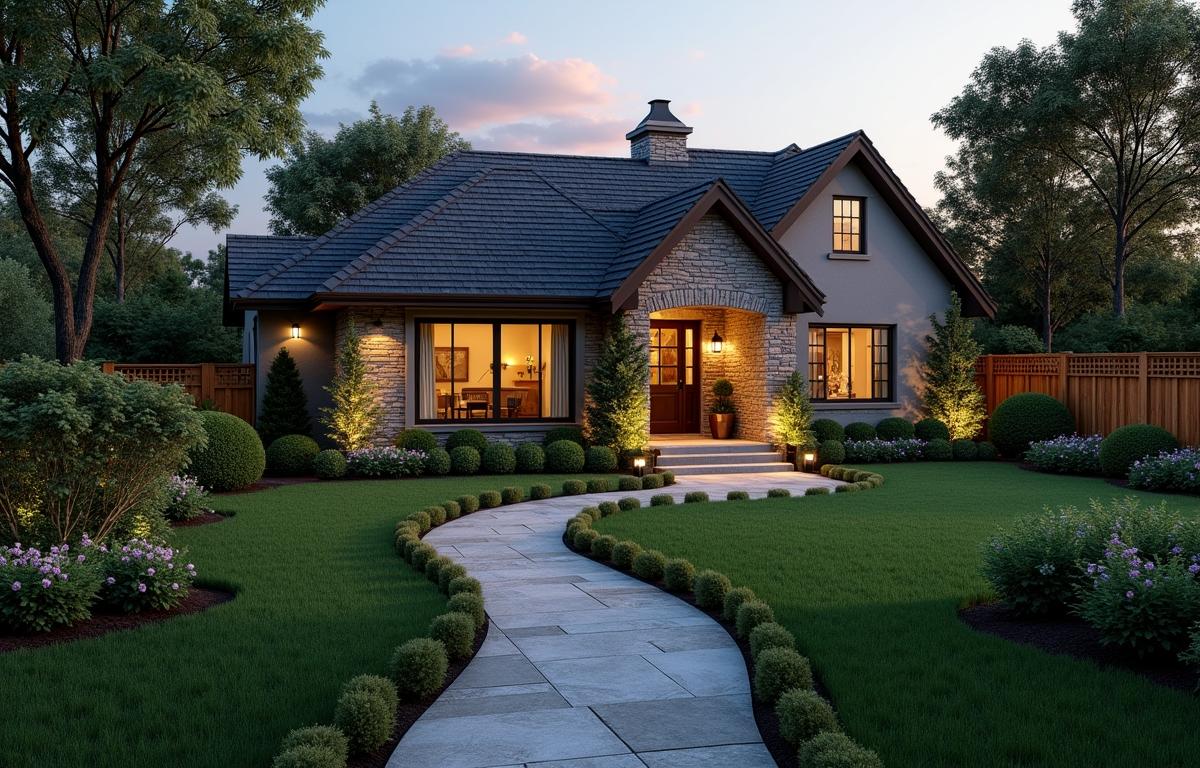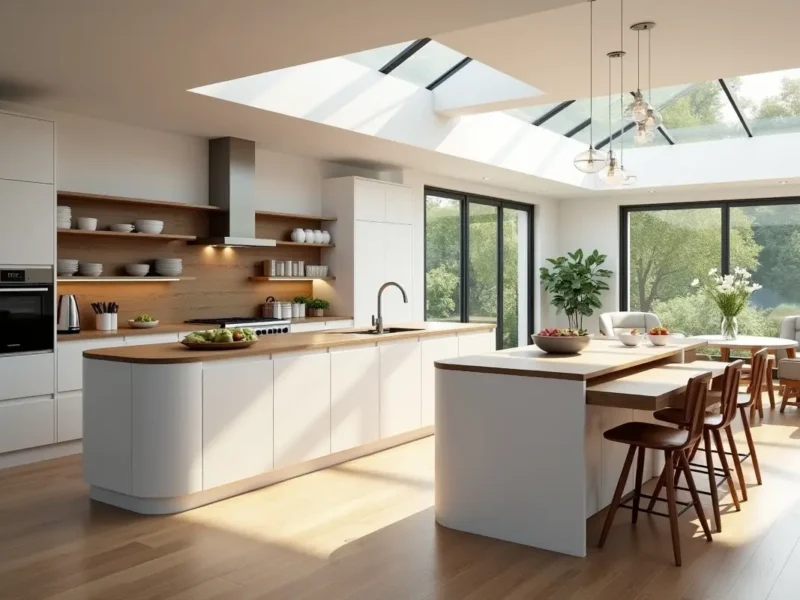Carefully chosen landscaping can enhance your home’s security while maintaining its aesthetic appeal. Many homeowners focus on the aesthetic benefits of trees, shrubs, and garden features, but those same design elements can affect how secure your property feels and how easily someone can access your house. Whether you have a small front lawn or an expansive backyard, being mindful of each element in your exterior design is key to safeguarding your living space. Paying attention to the layout, vegetation types, and visibility can make a noticeable difference in discouraging unwanted visitors.
A well-tended yard does more than just boost curb appeal. It can transform the entire atmosphere of your property and give you that extra peace of mind. While ornamental plants and outdoor décor are wonderful for creating a personal oasis, you’ll want to ensure every choice also supports a safer environment. With a few smart tweaks to your design, you can help create an outdoor space that not only looks good but also keeps intruders at bay.
It’s not about turning your home into a fortress. The goal is to find a balance between enjoying natural beauty and deterring potential trespassers. From picking specific plants to trimming existing shrubbery, there are practical ways to make your yard more secure without compromising on comfort or style.
Why the Layout of Your Yard Matters
When it comes to home security, layout is essential. Areas with tall fences, winding pathways, and thick shrubbery might feel cozy, but they could also form hidden nooks for someone to lurk in. By arranging your garden zones more thoughtfully, you can retain a private ambiance without creating blind spots. Open sightlines can be helpful, too, since neighbors are more likely to spot suspicious activity if there’s a clear view.
An organized layout also makes it easier to maintain your property in the long run. When you have logical routes for foot traffic and designated spaces for flower beds, it motivates you to keep pathways well-tended and vegetation properly trimmed. A tidy, well-designed yard tends to look more “occupied,” and that impression alone can discourage someone looking for signs of a vacant or neglected home.
Plant Selection and Placement
Thoughtful plant selection can go a long way toward promoting a safer environment. Thorny or prickly plants placed near windows, for instance, can deter potential intruders who might consider using those entry points. Roses or certain holly species can be beautiful additions while still discouraging close contact. But don’t rely solely on spiky vegetation there’s more to creating a secure perimeter than picking prickly shrubs.
Consider how tall your plants will get and where their foliage will spread. If bushes or hedges block your windows entirely, you lose an important vantage point to monitor yard activity. Placing taller greenery farther from the house can help maintain a good line of sight and prevent overgrown branches from providing easy climbing access to second-story windows. These small adjustments in plant placement can keep your yard appealing while guaranteeing better visibility.
Overgrown Foliage as a Risk Factor
Excessive growth can give potential intruders a perfect place to hide. If you have thick shrubs tucked in corners or near entry points, make it a priority to trim them back even if you love the lush look. By controlling plant height and spread, you allow neighbors or passersby to see if someone is lingering in suspicious spots. That extra visibility often acts as a deterrent.
Foliage that’s creeping around doorways or windows can also compromise the structural integrity of your home. Vines that climb up walls may look charming, but they can create easy footholds. Periodically pruning those vines and keeping them off window frames is a simple, effective way to reduce potential security risks.
Keeping Shrubs and Bushes Trimmed
Regular trimming does more than just create a neat, polished appearance. It helps maintain a clear view of key areas like doors and windows, making it more difficult for anyone to approach undetected. When bushes or hedges are kept at a reasonable height, it’s tougher for suspicious individuals to remain hidden. This basic upkeep might feel like a chore, but it’s part of an ongoing investment in your safety.
Trimming also fosters healthier growth. Dense, unkempt vegetation is more prone to disease or insect infestation, which can weaken plants and leave them looking unsightly. Robust, vibrant greenery enhances your property’s curb appeal and makes it look well-cared-for, signaling to would-be intruders that you are diligent about upkeep a factor that can deter them from targeting your home.
Using Outdoor Lighting to Your Advantage
Dark corners or dimly lit entrances can be appealing to people who don’t want to be seen. By adding outdoor lighting strategically, you reduce these shadowy areas and increase the sense of security on your property. Motion-activated lights, in particular, can startle anyone trying to creep around after dark. Placing these near doorways, pathways, and darker zones around your yard extends your watchful presence throughout the night.
If you already have lighting, make sure to consider how it interacts with your overall design. Having too much brightness directed at a window can reduce visibility inside and create glare. Position your lights to highlight walkways, seating areas, and any potential hiding spots. Soft, well-dispersed lighting also makes evening gatherings more enjoyable, turning your yard into a welcoming space for friends and family.
Layering Your Security with Fences and Gates
Physical barriers can be very effective, but overdoing it might create an unwelcoming fortress-like vibe. Instead, think of fences and gates as the first layer of security that discourages casual trespassers. A strong gate, secured with a reliable lock, signals that your yard is off-limits while still complementing your exterior design. If you’re concerned about aesthetics, choose materials and designs that match your home’s style for a cohesive look.
Before installing or updating a fence, check local regulations about height and materials. In some cases, chain-link fences can feel utilitarian; however, they allow for excellent visibility. Wooden fences can look cozier but might also become tall barriers that make it easier for someone to hide. It’s all about finding a balance that delivers privacy while still letting you spot unusual activity.
Striking a Balance Between Privacy and Visibility
Total privacy might sound appealing, but it can work against you. High walls and thick hedges prevent prying eyes from looking in, yet they also reduce your ability to see out. This can create pockets of darkness and blind spots. If you value privacy, try layering smaller, partial privacy fences with see-through or semi-open materials. That way, you can maintain a sense of seclusion without sacrificing important sightlines around your property.
Another option is growing plants that offer coverage without forming a solid barrier. Wispy grasses, spaced-out shrubs, or trellises with latticed vines can provide a sense of enclosure while still allowing light and partial views. This approach grants you the tranquility of a closed-off yard while remaining aware of what’s happening beyond your immediate space.
Seasonal Maintenance and Ongoing Vigilance
Your yard changes with the seasons, and so do its security needs. Leaves pile up in fall, creating hidden spots. Heavy snowfall in winter can turn solid fences into makeshift climbing platforms. Keep an eye on changing conditions that might unintentionally enable intruders. Routine yard checks are a proactive way to maintain safety throughout the year.
Think ahead about seasonal tasks like clearing leaf litter near doors and windows or remodeling your flower beds in spring to keep them visible yet decorative. While it might feel like extra work, these tasks become simpler when you break them down month by month. Plus, you’ll catch small issues before they become larger headaches. A vigilant approach ensures that your property always signals, “Someone lives here and cares.”
Practical Tips to Get Started
One of the easiest ways to begin is with a quick walk-through of your property. Look for any areas that feel especially dark or overgrown.
You might also step back and compare your yard to neighbors’ homes what stands out, and how can you adjust those features to fit a more secure profile? If you notice certain spots that could hide suspicious activity, address them with better lighting or by trimming foliage. Additionally, professional backyard designers in Orange County, or anywhere else, can transform outdoor spaces into functional retreats with custom layouts, landscaping, and modern features.
Try introducing plants in a measured way. Start with a smaller flowerbed or a few shrubs positioned at strategic spots. Over time, you can expand or modify your gardening plan to create an environment that’s aesthetically pleasing yet still discourages potential trespassers. Each small improvement makes a difference, adding up to a yard that works cohesively to protect your home.
Even simple additions, like a gravel path or mulch, can add audible cues to your security approach. Crunching footsteps might serve as a subtle alert that someone is nearby. Similarly, if you maintain a well-defined walkway that leads to the front door, you establish a natural flow of foot traffic that’s easy to observe from inside. Design details like these subtly shape how people move around your property and how easy it is for you to keep track of unexpected visits.
Staying aware of landscaping trends and new home security measures can inspire fresh ways to protect your property. Whether you upgrade your garden lighting or try a new approach to hedges, a little experimentation goes a long way. By addressing each element mindfully plant selection, fence design, lighting, and ongoing care you can enjoy an outdoor space that feels both secure and inviting.



